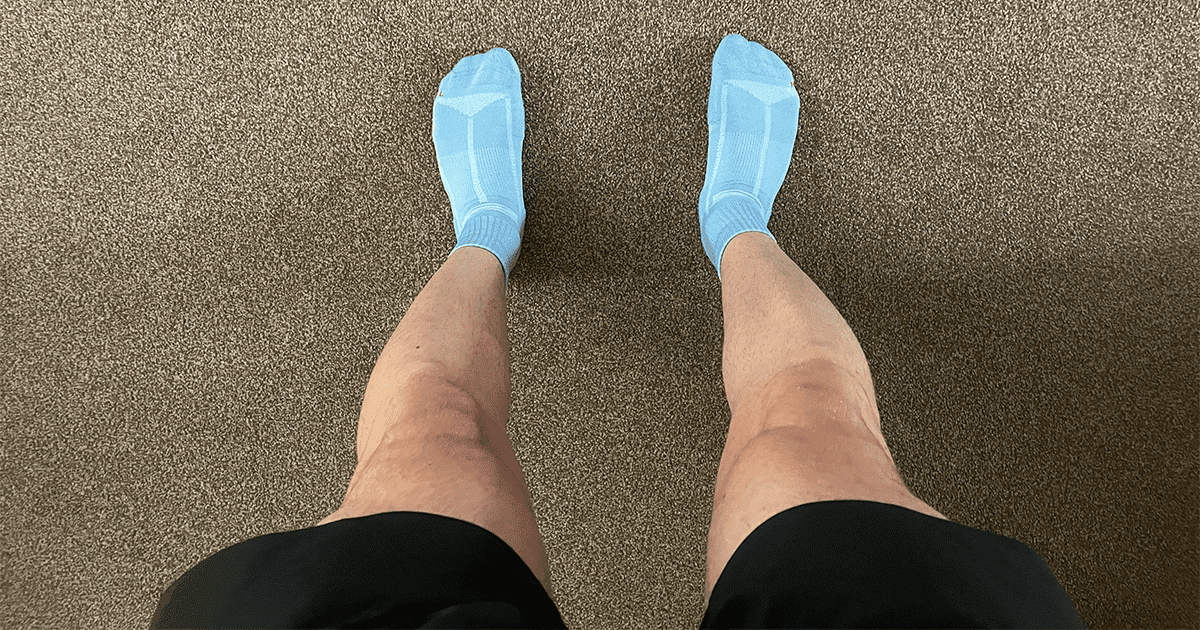Indoor running tracks: what you need to know
What is the difference between an indoor running track and an outdoor one?

If you’ve ever run on an indoor running track before, chances are you noticed a slight difference to outdoor track running. You see, indoor running tracks are actually slower as the track is smaller.
This results in tighter turns and more laps to cover your target distance. So, how long is a running track? Regular outdoor running tracks are 400m but indoor running tracks are usually 200m, half the length of an outdoor one.
What are the benefits of indoor track running?
While the benefits are certainly few, especially compared to outdoor running tracks, there are still some benefits to reap from indoor track running:
- Increased mental toughness during training
- No wind resistance
- Can train in optimal conditions during the winter months
Related: Running in the wind: 10 tips to make it easier.
1. Increased mental toughness during training on indoor running tracks
As the track is shorter in distance than your standard outdoor running track, this means you’re going to be running up to double the number of laps to reach your required distance.
For example, 25 laps on a 400m running track would equal 10km whereas as on an indoor running track would require 50 laps. The distance is the same but there are more sharp turns, slowing runners down.

However, if you train on an indoor running track, whether during winter or year-round, this will actually help build mental toughness.
Quite clearly this is because you’re going through a period of monotonous laps. If you are able to zone out while mentally breaking up the number of laps left, you may be greater prepared mentally for your next indoor track race.
Related: 20 Running quotes to motivate you for the marathon.
2. No wind resistance
As well as the ability to increase your mental toughness during training, training on an indoor running track means there is no wind resistance.
Conversely, training on an outdoor track, especially during the winter months can be particularly challenging and uncomfortable – as many of you will have experienced.
While you can’t change the race venue between an indoor running track and outdoor track, you can choose to train on an indoor track once the wind picks up or the weather takes over.
This is an excellent way to get in a controlled training session regardless of the weather.
3. Can train in optimal conditions during the winter months

As briefly touched upon, indoor track running allows you to train in optimal conditions during the winter months. This is especially useful if logging and comparing your running times week by week or session by session.
If the weather were to interfere, say on an outdoor running track, this would be particularly difficult to accurately compare times.
Instead, opting for an indoor track guarantees the conditions to be the exact same each time – just watch out for any other runners and stick to the inside lane if possible.
Related: Running in the winter: 10 tips to make it more bearable.
What are the downsides to training on an indoor running track?
There are a handful of downsides to running on an indoor track as opposed to outdoors. However, some are more opinion-based than others:
- It’s boring
- You might miss nature and or running outside
- Sharper turns and more laps
1. Indoor track running is boring…
Yep, you probably guessed it and likely experienced it yourself.
Indoor track running is similar to running on a treadmill, it gets boring rather quickly.
Nevertheless, this shouldn’t be too much of a problem if heavily focused on the session or if you’re not logging miles and miles on the track.
Anyway, one way to break down running indoors and to make it slightly more enjoyable is to perform your warmup and cooldown outside, if possible.
While this may drop your body temperature slightly more compared to running indoors, it may result in you actually sticking the session out… especially if you get bored easily.
2. You might miss nature and running outside

Much like indoor track running being boring, if running indoors too often you may begin to miss running outside.
To prevent this, you may want to only run inside when required, not opting for an indoor session unless it’s absolutely necessary.
With that being said, it’s important not to underestimate the usefulness of an indoor running track, especially when chasing a personal best during cold winter months.
Related: What are the 8 different types of running workouts?
3. Shaper turns and more laps
As the distance of a standard indoor track is twice as short as a regular outdoor track, this inevitably means you’re going to have to run more laps to tally up the same distance.
While the distance obviously stays the same, it may seem like you’re putting in more effort. This can be mentally exhausting, especially if running mile repeats or longer sessions.
Furthermore, indoor running tracks also have sharper and more frequent turns – this will slow down your momentum.
Therefore, to stick to your lane and perform your best, we recommend digging out your spikes and getting some well-needed practice before hitting a hard session (you’ll thank us later…).
Outdoor vs. indoor running tracks, which is best for chasing a personal best?
As you’ve probably guessed, running indoors is generally slower than outdoors. This is mainly due to the increased number of turns to reach the same distance as an outdoor track, with these also being sharper.
Unless you were to run in very windy and treacherous conditions, chances are running an outdoor track will be much faster and greater suited to chasing that personal best.
What about spectating?
Spectating is one of the better aspects of indoor track running. As the track itself is smaller, this often results in the crowd being more immersed in the action. This crowd support, especially at a home venue for high-level athletes can work wonders toward finishing in the top three positions.
Likewise, if paying to support your favourite athletes, you want the best experience possible. If this is the case, we’d actually recommend booking to watch an indoor event over an outdoor one!

As well as this, sometimes music is played through the speaker system of an indoor track. This makes for a much more enjoyable experience during the breaks and also the event, giving it a much more lively feel to it.
Although often overlooked, athletes themselves may also benefit from this music. Music is great for calming nerves, especially if the runner themselves is used to running while listening to music.
Whilst the impact of this may not be significant, it can be a nice addition and have somewhat an effect on individual runners – especially if eye of the tiger comes on!
The bottom line
Indoor track running has both benefits and downsides, like most things in life.
However, it certainly has its place in many training programs – whether this is to get in a great session during the winter months or to improve mental toughness, indoor track running is definitely worth a try.
With that being said, if looking to run a personal best we recommend running on an outdoor running track over an indoor track. This is because it has fewer and less sharp turns while being nowhere near as mindnumbing when compared to running indoors.

Matthew is a lifelong runner, chief tester of all products, the founder of Running101, and freelance content writer for active brands. When he’s not writing, he enjoys lifting weights, cycling in the Lake District, and watching fast cars drive in circles on a Sunday. He also has a BA in sport, exercise and physical activity from the University of Durham.




